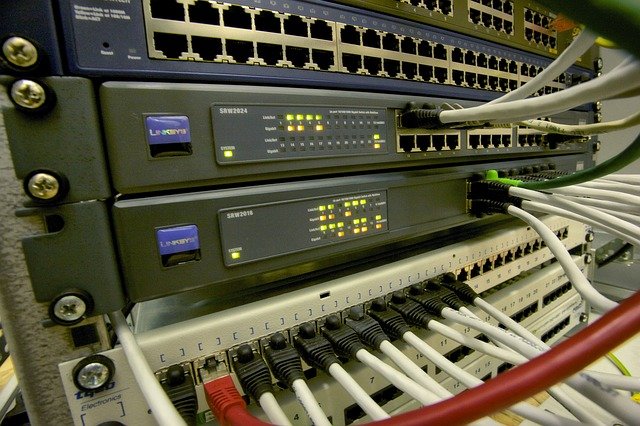- December 2, 2020
- Posted by: David Marshall
- Category: Digital Transformation, Management, Manufacturing

A few months ago, I talked about how cloud computing may be a solution for manufacturers to embrace the latest in manufacturing technology. I wanted to dive a little deeper into the idea and talk about some of the ways manufacturers can use the cloud to save time and money and protect their intellectual property.
Many manufacturers are still running their servers inside the IT office or sometimes in a special server room. Some of them may even keep their manufacturing servers out on the shop floor since the server — somehow, inexplicably — needs to be closer to the action.
But we’re in the second decade of the 21st century. We no longer have to rely on an old tower computer stuck under the IT director’s desk or use cobbled-together applications and ERP software to keep everything running.
If you know the old manufacturing: mantra, “Good, fast, or cheap: Pick two,” you know how tough it is to find that perfect sweet spot where all three of those qualities come together.
Cloud computing may be it.
 First, the Good: Cloud computing is a lot more secure than having your server stored onsite. For one thing, if you use an Amazon Web Service (AWS), Google, or even Microsoft, you’re going to be a lot more secure. That’s because those companies are dedicated to preventing hackers and crooks from infiltrating their systems. They use artificial intelligence and machine learning to learn from the various attacks that hit their thousands of servers, and that knowledge gets shared with their security algorithms. The more they’re hit, the more they learn. The more they learn, the better they are.
First, the Good: Cloud computing is a lot more secure than having your server stored onsite. For one thing, if you use an Amazon Web Service (AWS), Google, or even Microsoft, you’re going to be a lot more secure. That’s because those companies are dedicated to preventing hackers and crooks from infiltrating their systems. They use artificial intelligence and machine learning to learn from the various attacks that hit their thousands of servers, and that knowledge gets shared with their security algorithms. The more they’re hit, the more they learn. The more they learn, the better they are.
This is Fortune 500-level expense, too, which means you probably don’t have that level of security in your shop. (I just put the “probably” in there to be nice. You don’t have that level of security, period.) You can improve your security a thousandfold just by switching to a cloud-based server for all your business functions, enterprise software, and intellectual property.
But if you’re worried that your cloud storage is vulnerable because it’s not inside your locked facility, the “bad guys” are not sneaking into your facility. They’re coming in through the Internet. Remember, everyone’s server is in the cloud to someone else. Your in-house server is still “in the cloud” to anyone trying to breach it. It’s just less secure than the ones I’m talking about.
Second, the Fast: Cloud computing is a lot faster than your in-house servers because they’re running the latest server hardware. That’s because most cloud-based servers are upgraded every 3 – 5 years. As new hardware improvements are made, the big cloud-computing companies upgrade their servers on a rolling basis. Most in-house operations don’t upgrade their servers every five years, let alone every three.
Also, cloud-based server software gets upgraded frequently. Most in-house servers aren’t upgraded that often. Installing all those upgrades, patches, and security fixes take forever. I’ve heard from other manufacturing managers who find their IT people stopped running upgrades a few years back, partly because it took too long but also because the new upgrades no longer supported the older ERP software they were still running. Un-patched software means flawed software. That means the bad guys can get into your servers and steal your data. On a cloud service, they update all the operational software for you. Some operations will even help you manage your business software.
And, you can expand your server storage and usage without increasing your physical space. Some business operations, like big analytics packages, require some extra computing power. Or maybe you’ve added a lot of new data, such as on your digital manufacturing machines, or because you bought out another company.
Whatever the reason, if you have to expand fast, you can call up your cloud-computing provider or even go onto the website and add some additional space in a matter of minutes. If you had to do that in-house, you’d have to order the server, wait for delivery, install it, make sure it’s running, run all the upgrades, and then finally upload the new data. That could take a couple of weeks, time that you don’t have.
Third, the Cheap: Cloud computing is much less expensive than in-house computing. Much less. For one thing, the cost of renting your cloud servers is often less than buying and managing the hardware. The servers are stored elsewhere, which means you don’t have to use up valuable office real estate to store all the equipment.
Also, as you expand your in-house hardware, you may need to hire new IT professionals, who often come with high 5-figure or low 6-figure salaries. But if everything is in the cloud, you don’t need as many people. You can save money on the salary costs alone. Depending on your operation, you may only need a fraction of the people you would for a large in-house operation.
You can also expand your server size and computing power for just a few dollars. The expanding server space and computing power I mentioned above? That costs a few more dollars per month. And you don’t even have to do it every month. Just turn it on for peak usage and turn it off again when you don’t need it. Some cloud-computing services only charge for usage time, so you could have the service turn on and off automatically as it’s needed and only get billed for the actual uptime.
Finally, cloud computing reduces your energy costs. A server room uses a lot of power just to run the hardware. You also need to keep the server room very cool, so it often requires its own air conditioning unit or three. That means the energy costs just to operate the server room can be a large fraction of your total utility costs just for the back office. You can offload those costs just by switching to a cloud-computing operation because that’s all figured into your regular monthly cost.
And, cloud computing allows for greater collaboration between your engineers, industrial designers, and anyone else who needs to share information across the country or even in another part of the world. Collaboration tools can be used online, letting people share and discuss projects in real-time.
You can upload 3D printing and digital twinning information, or even upload your manufacturing and sales data to your cloud-based ERP software, so the managers and executives can see the day’s data in a real-time reporting dashboard.
Cloud computing may seem a little far-fetched to some operations managers, but it’s widely used in the financial, health, retail, and supply chain industries. It’s time manufacturers start embracing the new technology for themselves and use this as a stepping stone to greater advancements.
I’ve been a manufacturing executive, as well as a sales and marketing professional, for a few decades. Now I help companies turn around their own business, including pivoting within their industry. If you would like more information, please visit my website and connect with me on Twitter, Facebook, or LinkedIn.
Photo credit: LoboStudioHamburg (Pixabay, Creative Commons 0)

